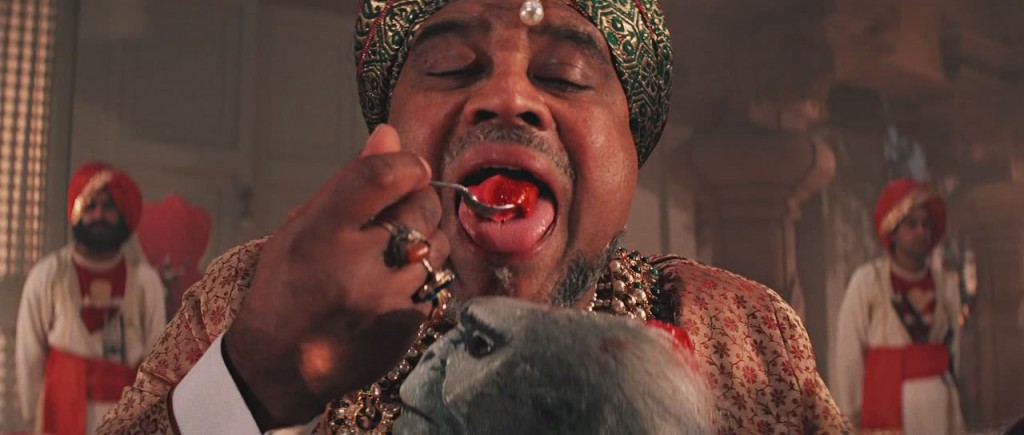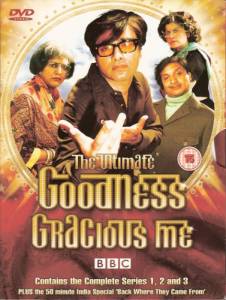A dedicated follower of fibre
I’ve been eating Weetabix for as long as I can remember. One of my earliest memories is of having it spooned into my mouth, a bit left on my face wiped off and being packed off to school. I guess I was four or so. When I had the mumps it was all I could eat.
I was even a member of the Weetabix fan club. That short lived experiment where five manic characters in dungarees and possibly on angel dust* exhorted you to eat more fibre. OK!

Four decades on, I reckon I have eaten something in excess of twenty thousand of those rounded biscuits. Originally only two per day, but now three and a liberal dose of honey, usually with hot milk. Once, while camping in Ireland, from a shared bowl.
Price comes before a fall
With all that Weetabixperience you’d think I’d know better than to buy off brand.** In fact not that many months ago I had stern words with my missus over an experiment with some Weetbisk nonsense she picked up. “Never darken our home with this abomination again,” was the high handed law I laid down.
Hubris, Nemesis and the insidious price tag. I saw this in my local Tesco through the face mask condensation on my specs.

Seventy four pence. 74 vs 280 copper headed queens.*** A quarter of the price give or take. And if you look closely the earnest people of Stockwells claim they’ve been at this since 1924.
I was seduced. I knew better than to fall for the yellow box, I’m not a moron. But 74p, and since 1924. How bad could it be?
Method to my madness
There is a point to eating Weetabix in the morning beyond the benefits of a high fibre diet. It fits into my process. Kettle, prep meds, bowl, 3x Weetabix, honey, milk, microwave for 1 minute 10 seconds. Get the coffee on. Weetabix out of the microwave and wolf them down. Sometimes pouring into my gullet and not bothering with a spoon except to clean up the dregs. Then meds, make and take the coffee up to my study to start the day.
Weetabix don’t actually taste of much, the honey takes care of that, but there is a distinct texture that remains despite being largely liquefied. The key is they’re quick. It takes a while to work your way through a bowl of Rice Krispies. Longer still for Crunchy Nut Cornflakes. Toast is a faff with too many parts to the process, and in our arctic kitchen there is time penalty for every second the toast remains unbuttered. Porridge takes longer in the microwave and has to cool before it can be eaten.
If you’re the kind of person who cuts fruit to put on their cereal, or arranges dollops of yoghurt and blueberries, good for you. I prefer the extra minutes in bed. In the words of the immortal Half Man Half Biscuit: I don’t know anyone who puts peaches on their cornflakes either.
I used to work in manufacturing. Complexity means cost. In this case time. Weetabix is cereal made simple.
All that glistens…
You’d think with all that the off brand wheat biscuits would be viable substitutes. The key elements are something quick that can be poured down your throat in a hurry and doesn’t taste of too much. Can’t be too hard to grind up grains and achieve that limited set of requirements can it?
Dear readers it is. It’s all about the texture. Weetabix retains a crucial bit of bite. A solidity within the smoothness. Grain. The off brand biscuits dissolve into a sludge. Gloopy, almost slimy. Tongue and throat are not fooled. A neutral start to the morning turns negative.
And that’s what I got in the karmic repercussions of my harsh tones with my missus. Tempted by the provenance of another, as Squeeze didn’t sing. And by the price.
I mean, 74p! I’m a follower of Jack Munroe. I felt I had to. I really shouldn’t have.
A week and a day of purgatory
Eight breakfasts. Eight mornings I’ll be living with the regret of this moment of madness. On day one I vented on the first Teams call of the morning and a colleague commiserated. Her own experience was the same with Rice Krispies. Not even the Marks ones were up to the mark.
The lesson is clear: speak softly to your spouse and buy the brand.
End
*this was in the era before crystal meth
**privilege check. I have had my share of dark days where offbrand was the only option, those are not counted in the 20k
*** oh give over. The family pack is between the Stockwells and the comparable 24 pack







































:format(jpeg):mode_rgb():quality(90)/discogs-images/A-3496237-1440514287-1798.jpeg.jpg)




